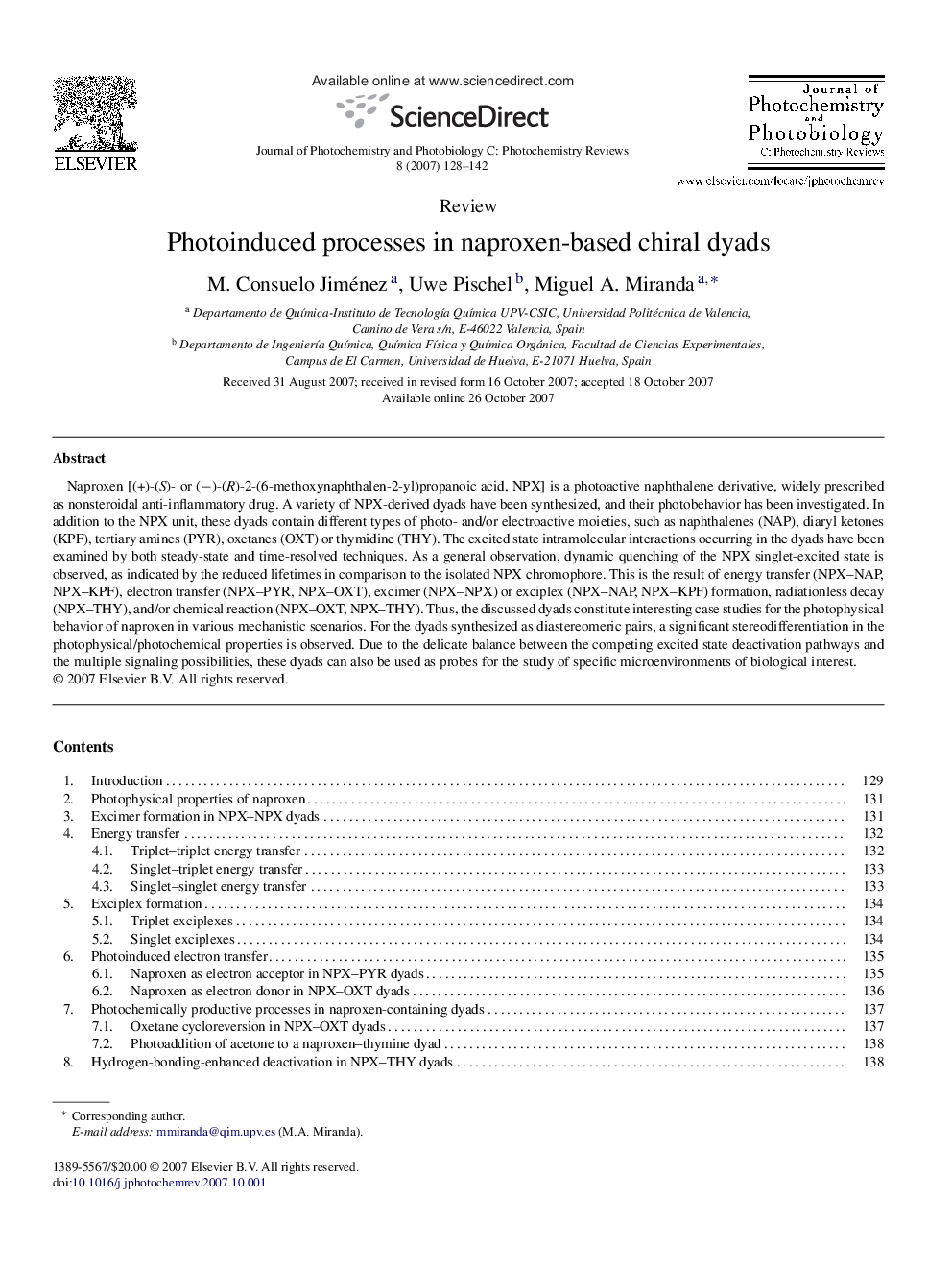| Article ID | Journal | Published Year | Pages | File Type |
|---|---|---|---|---|
| 31384 | Journal of Photochemistry and Photobiology C: Photochemistry Reviews | 2007 | 15 Pages |
Naproxen [(+)-(S)- or (−)-(R)-2-(6-methoxynaphthalen-2-yl)propanoic acid, NPX] is a photoactive naphthalene derivative, widely prescribed as nonsteroidal anti-inflammatory drug. A variety of NPX-derived dyads have been synthesized, and their photobehavior has been investigated. In addition to the NPX unit, these dyads contain different types of photo- and/or electroactive moieties, such as naphthalenes (NAP), diaryl ketones (KPF), tertiary amines (PYR), oxetanes (OXT) or thymidine (THY). The excited state intramolecular interactions occurring in the dyads have been examined by both steady-state and time-resolved techniques. As a general observation, dynamic quenching of the NPX singlet-excited state is observed, as indicated by the reduced lifetimes in comparison to the isolated NPX chromophore. This is the result of energy transfer (NPX–NAP, NPX–KPF), electron transfer (NPX–PYR, NPX–OXT), excimer (NPX–NPX) or exciplex (NPX–NAP, NPX–KPF) formation, radiationless decay (NPX–THY), and/or chemical reaction (NPX–OXT, NPX–THY). Thus, the discussed dyads constitute interesting case studies for the photophysical behavior of naproxen in various mechanistic scenarios. For the dyads synthesized as diastereomeric pairs, a significant stereodifferentiation in the photophysical/photochemical properties is observed. Due to the delicate balance between the competing excited state deactivation pathways and the multiple signaling possibilities, these dyads can also be used as probes for the study of specific microenvironments of biological interest.
